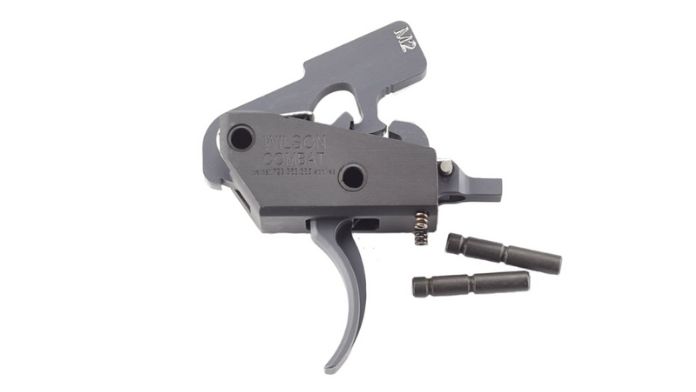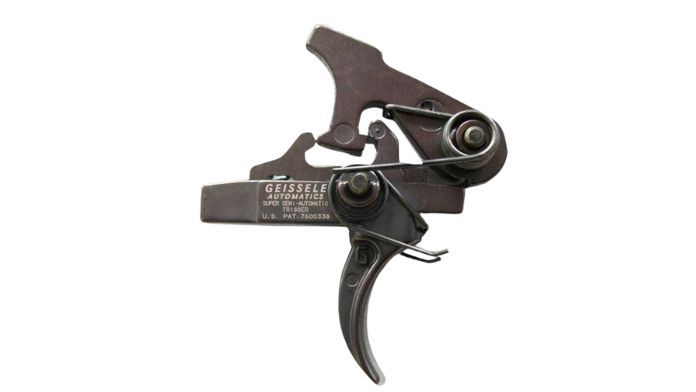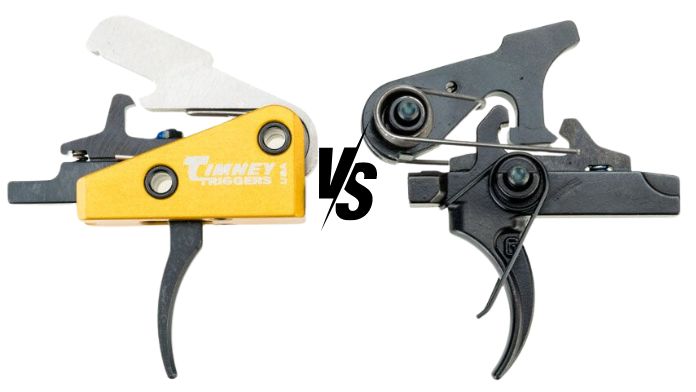When it comes to enhancing firearm performance and precision, trigger mechanisms play a pivotal role. Whether you’re an avid shooter or a handguns enthusiast, understanding the nuances between single stage and two stage triggers can significantly impact your shooting experience. In this guide, we’ll delve into the intricacies of both trigger types, highlighting their differences, benefits, and applications.
The Basics: Single Stage vs 2 Stage Triggers
Before diving into the comparison, let’s unravel the fundamental principles behind single stage and two stage triggers.
Single Stage Triggers
A single stage trigger is characterized by its straightforward functionality. When pressure is applied to the trigger, it moves in a linear motion until it reaches a defined break point, releasing the firing mechanism and igniting the cartridge. This type of trigger offers a consistent pull weight throughout the entire process, making it predictable and easy to operate.
Two Stage Triggers

Contrary to single stage triggers, two stage triggers comprise two distinct phases: the initial take-up stage and the final break stage. During the take-up stage, the trigger travels a predetermined distance, providing tactile feedback to the shooter. Once the slack is taken up, the trigger encounters resistance before reaching the breakpoint, where the shot is fired. This two-stage process enables shooters to anticipate the precise moment of firing, promoting enhanced accuracy and control.
Understanding the Key Differences
Now that we’ve established the core mechanisms of 2 stage trigger vs single stage types, let’s explore their divergent characteristics and functionalities.
Trigger Pull
One of the most notable disparities between single stage and two stage triggers lies in their trigger pull. Single stage triggers offer a consistent pull weight from start to finish, providing simplicity and uniformity in operation. Conversely, two stage triggers introduce a nuanced approach, with an initial take-up stage followed by a distinct break point, allowing shooters to fine-tune their shot placement with increased sensitivity and control.
Precision and Accuracy
When it comes to precision shooting, the choice between single stage and two stage triggers can significantly impact performance. Single stage triggers, with their straightforward operation, are well-suited for rapid-fire scenarios and close-quarter engagements where split-second reactions are paramount. On the other hand, two stage triggers excel in precision shooting disciplines, such as long-range marksmanship and competitive target shooting, offering shooters the ability to maintain precise control over their trigger manipulation for consistent and accurate shots.
Versatility and Application
The versatility of trigger mechanisms extends to various shooting applications and preferences. Single stage triggers find popularity among tactical shooters and law enforcement personnel due to their simplicity and reliability in high-stress environments. Conversely, two stage triggers are favored by precision shooters and competitive sharpshooters seeking unparalleled control and consistency in their shooting endeavors.
Advantages and Disadvantages
Each trigger type comes with its own set of advantages and limitations, catering to different shooting styles and preferences.
Single Stage Trigger: Pros and Cons

Pros:
- Simplicity: Single stage triggers offer straightforward operation, making them ideal for novice shooters and tactical applications.
- Consistency: With a consistent pull weight, single stage triggers facilitate rapid and predictable shot placement.
- Reliability: The simplicity of single stage triggers enhances their durability and resistance to environmental factors.
Cons:
- Limited Control: Single stage triggers may lack the nuanced control required for precision shooting at extended ranges.
- Less Feedback: Without the distinct stages of a two stage trigger, shooters may have limited tactile feedback during trigger manipulation.
Two Stage Trigger: Pros and Cons
Pros:
- Enhanced Control: Two stage triggers provide shooters with precise control over trigger manipulation, promoting enhanced accuracy and shot placement.
- Tactile Feedback: The distinct stages of a two stage trigger offer tactile feedback, allowing shooters to anticipate the break point for optimal timing.
- Versatility: Two stage triggers are well-suited for a wide range of shooting disciplines, from precision marksmanship to competitive shooting events.
Cons:
- Learning Curve: Mastering the subtleties of a two stage trigger may require additional practice and familiarity compared to single stage triggers.
- Complexity: The dual-stage mechanism of two stage triggers may introduce added complexity, potentially leading to increased maintenance requirements.
Practical Considerations and Applications
When deciding between single stage and two stage triggers, it’s essential to consider your intended shooting applications and personal preferences.
Single Stage Trigger Applications
– Tactical Shooting: Single stage triggers are well-suited for tactical scenarios where rapid and decisive shot placement is critical.
– Close-Quarter Engagements: In close-quarter environments, single stage triggers offer simplicity and reliability for quick target acquisition and engagement.
Two Stage Trigger Applications

– Precision Shooting: Two stage triggers shine in precision shooting disciplines, providing shooters with the control and sensitivity needed for long-range accuracy.
– Competitive Shooting: In competitive shooting events, two stage triggers empower shooters to achieve consistent and repeatable shot placement for optimal performance.
Exploring Popular Options: AR-15 Timney Triggers
Among the myriad of aftermarket trigger options available, Timney triggers stand out as a hallmark of quality and performance, catering to both single stage and two stage preferences.
AR-15 Timney Single Stage Trigger
Renowned for its crisp and reliable performance, the AR-15 Timney single stage trigger offers shooters a no-nonsense approach to trigger operation. With its consistent pull weight and durable construction, it’s a popular choice among tactical operators and enthusiasts seeking enhanced firearm performance.
AR-15 Timney Two Stage Trigger
For precision shooters and competitive sharpshooters, the AR-15 Timney two stage trigger represents the epitome of precision and control. With its dual-stage design and adjustable pull weight, it provides shooters with the versatility and sensitivity needed to excel in demanding shooting disciplines.
Conclusion: Choosing the Right Trigger for You
In the realm of firearms, the choice between single stage and two stage triggers ultimately boils down to personal preference and intended shooting applications. Whether you prioritize simplicity and reliability or precision and control, understanding the nuances between these trigger types empowers you to make informed decisions that enhance your shooting experience.
In summary, single stage triggers offer straightforward operation and consistency, making them ideal for tactical and rapid-fire scenarios. Conversely, 15 kit, two stage triggers provide shooters with enhanced control and precision, catering to the demands of precision shooting disciplines and competitive marksmanship.
Regardless of your preference, investing in a quality trigger mechanism, such as the AR-15 Timney triggers, ensures optimal performance and reliability in every shot. So, whether you’re hitting the range for practice or gearing up for your next competition. Choose the trigger that best aligns with your shooting style and preferences, and let your accuracy and precision speak for themselves.

